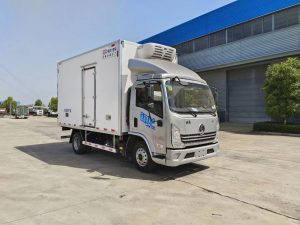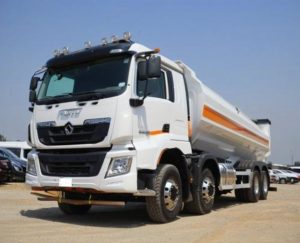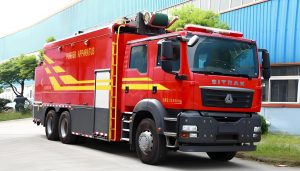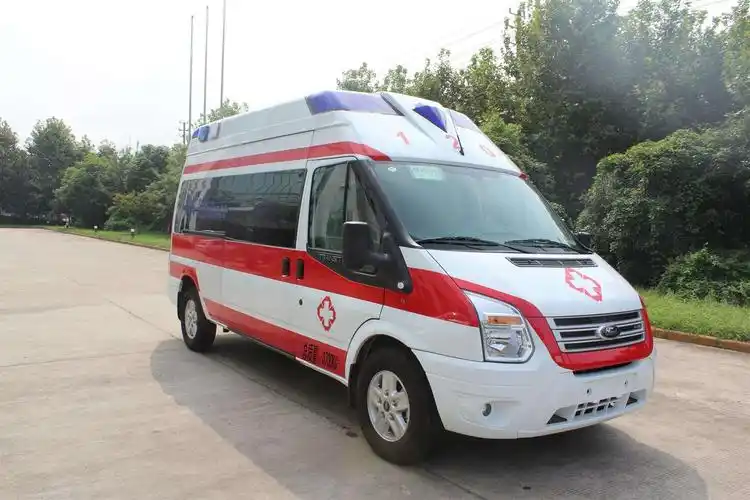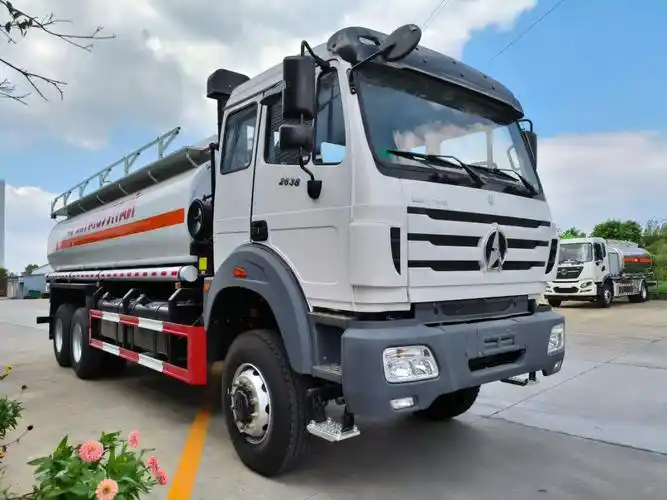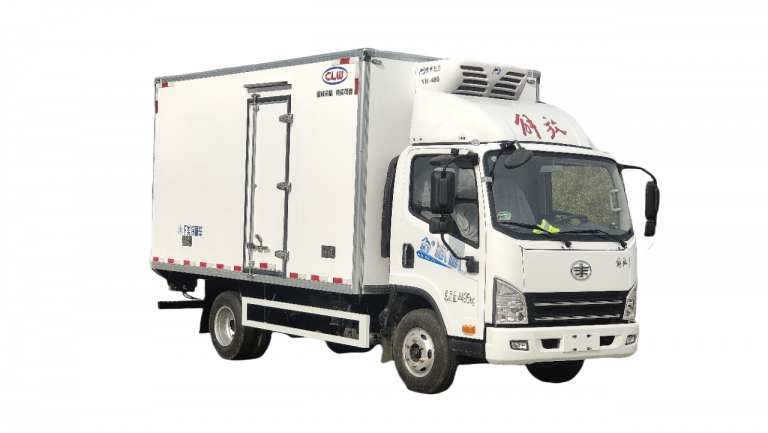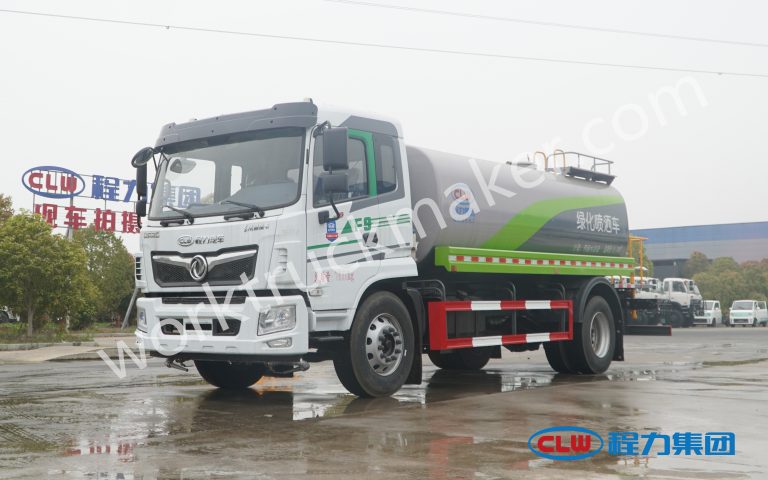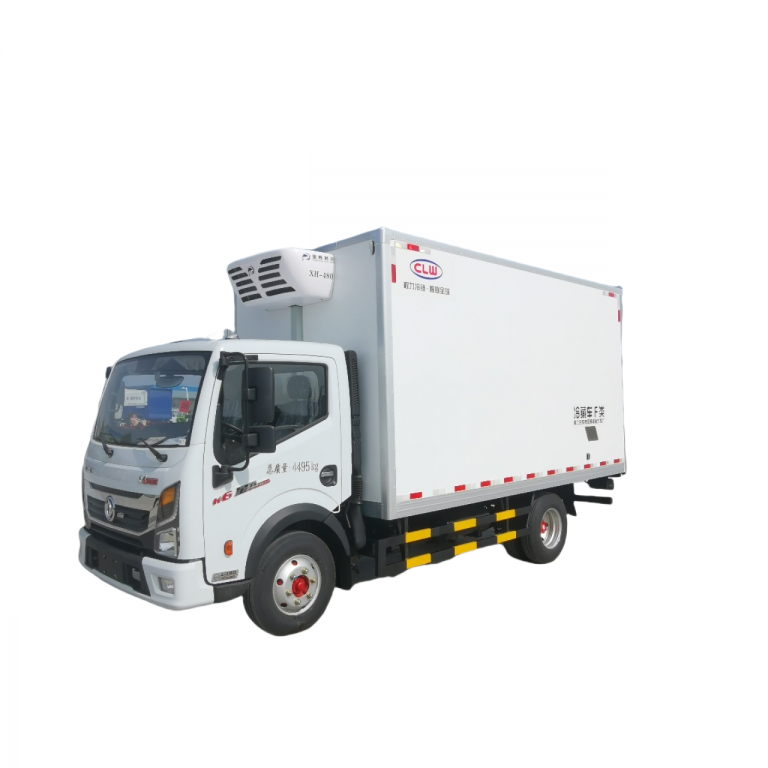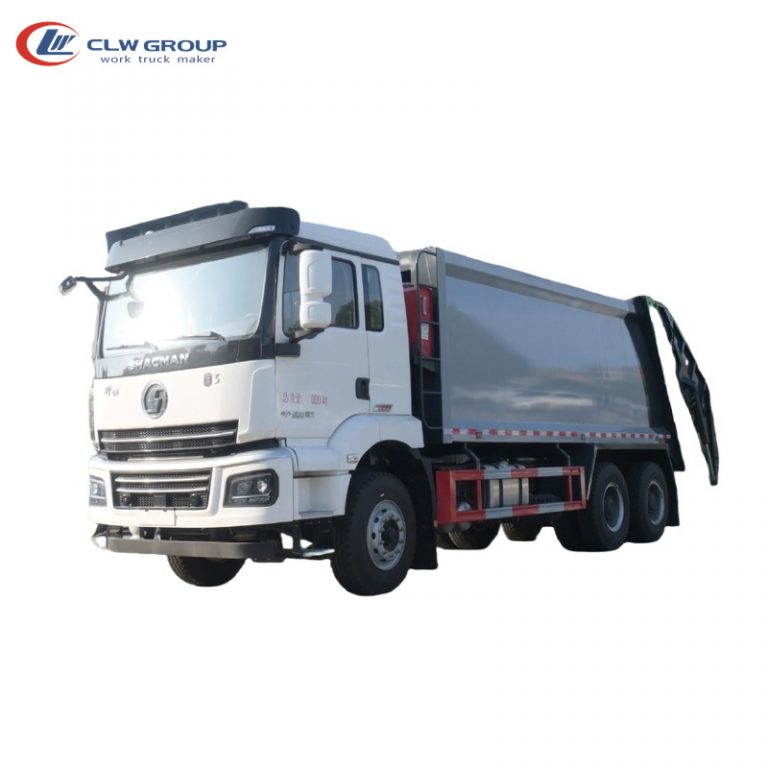Table of Contents
Toggle
Rescue trucks play a crucial role in emergency response operations, serving as mobile command centers and equipment carriers for first responders. These specialized vehicles come in various sizes and configurations, each designed to meet specific needs and challenges faced by rescue teams. Understanding the differences between light, medium, and heavy rescue trucks is essential for emergency services to make informed decisions when selecting the most suitable rescue vehicles for their operations.
This comprehensive review aims to compare light, medium, and heavy rescue trucks across several key aspects. It will examine their unique characteristics, including chassis and body construction, equipment storage solutions, and overall capabilities. The article will also analyze the cost implications and budget considerations associated with each type of rescue truck, providing valuable insights to assist emergency services in choosing the right vehicle to enhance their rescue operations and serve their communities effectively.
Understanding Rescue Truck Classifications
Rescue trucks play a vital role in emergency response operations, serving as mobile command centers and equipment carriers for first responders. These specialized vehicles come in various sizes and configurations, each designed to meet specific needs and challenges faced by rescue teams. To better understand the differences between rescue trucks, they are typically classified into three main categories: light, medium, and heavy rescue trucks.
Light Rescue Trucks
Light rescue trucks are nimble and versatile vehicles designed for quick response and maneuverability in various situations. These trucks are often built on smaller chassis, such as the Ford F-550, with a gross vehicle weight rating (GVWR) ranging from 10,000 to 23,500 pounds. Light rescue trucks are ideal for departments that need a compact yet capable vehicle to handle a wide range of emergency situations.
Key features of light rescue trucks include:
- Compact size for improved maneuverability in tight spaces
- Modular construction with extruded aluminum bodies
- Multiple compartment configurations for equipment storage
- Ability to carry essential rescue gear and tools
- Suitable for both on-road and off-road applications
Light rescue trucks are particularly useful in urban and suburban environments where larger vehicles may have difficulty navigating narrow streets or accessing confined spaces. They serve as efficient first-response units, capable of handling various emergencies until additional support arrives.
Medium Rescue Trucks
Medium rescue trucks bridge the gap between light and heavy rescue vehicles, offering a balance of capacity and maneuverability. These trucks typically have a GVWR ranging from 26,000 to 35,000 pounds and are built on commercial chassis with either 4×2 or 4×4 configurations. Medium rescue trucks are versatile and can be found in both urban and suburban fire departments.
Characteristics of medium rescue trucks include:
- Walk-around or walk-in body configurations
- Extensive compartment space for equipment storage
- Capability to carry specialized rescue tools and gear
- Suitable for vehicle accident and rescue response
- Often equipped with a small water tank and pump for firefighting capabilities
Medium rescue trucks, also known as squad trucks or technical rescue vehicles, are designed to handle a wide range of emergency situations. They carry a variety of equipment, including specialized tools for technical rescues, and can serve as support units for larger fire apparatus.
Heavy Rescue Trucks
Heavy rescue trucks are the largest and most capable rescue vehicles in a fire department’s fleet. These trucks are built on heavy-duty chassis with GVWRs exceeding 35,000 pounds and are designed to carry a vast array of specialized equipment for complex rescue operations.
Key features of heavy rescue trucks include:
- Extensive storage capacity for a wide range of rescue equipment
- Advanced lighting and power generation systems
- Capability to handle multiple-casualty incidents and chemical spills
- Specialized tools for technical rescues, including rope and water rescue equipment
- Large crew compartments to accommodate additional personnel
Heavy rescue trucks are often referred to as the “biggest and baddest” rescue vehicles, capable of handling the most challenging and complex emergency situations. They serve as mobile command centers and equipment carriers for large-scale incidents and technical rescue operations.
Understanding the classifications and capabilities of different rescue trucks helps fire departments make informed decisions when selecting the most suitable vehicles for their specific needs and operational requirements. Each type of rescue truck offers unique advantages, and many departments utilize a combination of light, medium, and heavy rescue trucks to ensure comprehensive emergency response capabilities.
Light Rescue Trucks: The Agile First Responders
Light rescue trucks serve as versatile and nimble vehicles designed for quick response and maneuverability in various emergency situations. These agile first responders are built on smaller chassis, such as the Ford F550, with a gross vehicle weight rating (GVWR) ranging from 10,000 to 23,500 pounds. Their compact size makes them ideal for departments that need a capable vehicle to handle a wide range of emergency situations while navigating tight spaces.
Key Features
Light rescue trucks are characterized by several essential features that enhance their functionality and efficiency:
- Modular construction with extruded aluminum bodies
- Multiple compartment configurations for equipment storage
- Pull-out compartment trays and tool boards for easy access
- Adjustable shelving to accommodate various equipment sizes
- Roll-up compartment doors for space-saving access
- Transverse sleeves for storing long equipment like stokes baskets
- Air bag storage sleeve racks for organized storage
- Advanced lighting systems, including LED warning lights and light towers
These trucks often come equipped with state-of-the-art technology, such as electronic sirens, LED lightbars, and traffic advisors. The Will-Burt Nightscan light tower is a common feature, providing enhanced illumination at emergency scenes.
Typical Uses
Light rescue trucks are versatile vehicles that can be utilized in various emergency response scenarios:
- First response in urban and suburban environments
- EMS support and patient care
- Vehicle extrication and rescue operations
- Hazardous materials incidents (with appropriate equipment)
- Fire support and overhaul operations
- Water rescue (when equipped with specialized gear)
- Technical rescue operations
Their compact size allows them to access areas where larger vehicles might struggle, making them invaluable in tight urban settings or on narrow roadways.
Advantages and Limitations
Advantages:
- Enhanced maneuverability in confined spaces
- Lower acquisition and operational costs compared to larger units
- Versatility in handling various emergency situations
- Ability to carry essential rescue gear and tools
- Suitable for both on-road and off-road applications
- Faster response times due to their agility
Limitations:
- Limited storage capacity compared to medium and heavy rescue trucks
- Reduced payload capacity, typically ranging from 2,000 to 6,000 pounds
- May not be suitable for large-scale or complex rescue operations
- Limited seating capacity for personnel
Light rescue trucks strike a balance between functionality and size, making them an excellent choice for departments that need a versatile first-response vehicle. While they may not have the extensive storage capacity of their larger counterparts, they compensate with their agility and ability to navigate challenging urban environments.
When selecting a light rescue truck, fire departments must carefully consider their specific needs, equipment inventory, and response area characteristics. By choosing the right configuration and features, a light rescue truck can significantly enhance a department’s emergency response capabilities while maintaining operational efficiency.
Medium Rescue Trucks: Balancing Capacity and Maneuverability
Medium rescue trucks serve as versatile vehicles that bridge the gap between light and heavy rescue apparatus. These trucks offer a balance of capacity and maneuverability, making them suitable for a wide range of emergency response scenarios. Typically built on commercial chassis with either 4×2 or 4×4 configurations, medium rescue trucks have a gross vehicle weight rating (GVWR) ranging from 26,000 to 35,000 pounds.
Design Characteristics
Medium rescue trucks are designed to maximize storage space while maintaining a manageable size. They can be customized with various compartment configurations, allowing emergency teams to carry extensive rescue equipment. The body length typically ranges from 14 to 20 feet, offering flexibility in design options.
Key design features include:
- Modular construction with extruded aluminum, galvanneal, or stainless steel bodies
- Walk-around, walk-in, or combination body configurations
- Roll-up or solid pan construction compartment doors
- Customized equipment mounts and brackets
- Advanced lighting systems, including portable lighting and light towers
- Generators for on-scene power supply
Manufacturers like EVI and Ferrara offer a wide range of customization options to meet specific department needs. For example, the Badin Lake Fire Department’s medium rescue truck features an 18-foot non-walk-in body mounted on a Freightliner M2 2-door chassis with a Cummins L9 350 HP engine.
Common Applications
Medium rescue trucks are versatile vehicles that can be utilized in various emergency response scenarios:
- Vehicle extrication and rescue operations
- Technical rescue support
- Hazardous materials response
- Fire support and overhaul operations
- Emergency medical services (EMS) support
- Mobile command and communications center
These trucks often carry specialized equipment such as hydraulic rescue tools, air cascade systems, and winches. For instance, the Badin Lake Fire Department’s truck includes a 25KW PTO generator, portable winch receivers, and a DOT bottle cascade system with a custom fill panel.
Pros and Cons
Medium rescue trucks offer several advantages:
- Increased storage capacity compared to light rescue trucks
- Better maneuverability than heavy rescue trucks
- Versatility in handling various emergency situations
- Ability to carry specialized rescue tools and equipment
- Option for walk-in configurations for on-scene workspace
- Customizable to meet specific department needs
However, there are some limitations to consider:
- Higher acquisition and operational costs compared to light rescue trucks
- Reduced maneuverability in tight urban spaces compared to smaller vehicles
- Limited patient treatment space compared to dedicated ambulances
- May require additional training for operators due to increased size and complexity
When selecting a medium rescue truck, fire departments must carefully consider their specific needs, response area characteristics, and budget constraints. The versatility of these vehicles allows for customization to fit each department’s unique requirements, making them a popular choice for many fire services.
By choosing the right configuration and features, a medium rescue truck can significantly enhance a department’s emergency response capabilities while maintaining a balance between capacity and maneuverability. These trucks serve as valuable assets in a fire department’s fleet, providing crucial support for a wide range of emergency situations.
Heavy Rescue Trucks: Power and Versatility
Heavy rescue trucks stand as the largest and most capable rescue vehicles in a fire department’s fleet. These powerful apparatus are designed to handle complex emergency situations and carry a vast array of specialized equipment. Built on heavy-duty chassis with gross vehicle weight ratings (GVWR) exceeding 35,000 pounds, heavy rescue trucks serve as mobile command centers and equipment carriers for large-scale incidents and technical rescue operations.
Unique Capabilities
Heavy rescue trucks offer unparalleled capabilities in emergency response scenarios. Their size and design allow for extensive storage capacity, advanced lighting systems, and power generation capabilities. These trucks can accommodate a wide range of specialized tools and equipment, making them invaluable assets for fire departments.
Key features of heavy rescue trucks include:
- Extensive compartment space, often ranging from 843 to 906 cubic feet
- Large transverse compartments above frame rails and 24-inch deep compartments below
- Advanced lighting systems, including telescoping single or dual rooftop lighting providing up to 18,000 watts of illumination
- Powerful generators ranging from 10kW to 75kW (diesel, hydraulic, PTO, or split-shaft)
- Customizable cab configurations, from 6-man to 10-man full-tilt cabs
- Capability to handle multiple-casualty incidents and chemical spills
Specialized Equipment
Heavy rescue trucks carry an extensive array of specialized equipment to address various emergency situations. The compartment layout is carefully designed to maximize storage efficiency and ensure easy access to tools and equipment.
Common specialized equipment found on heavy rescue trucks includes:
- Hydraulic rescue tools for vehicle extrication
- Air cascade systems for refilling breathing apparatus
- Rope rescue equipment for high-angle and confined space rescues
- Hazardous materials response gear
- Structural collapse and shoring equipment
- Specialized lighting and power generation systems
- Advanced communication and command center equipment
To optimize storage, heavy rescue trucks often feature:
- Roll-out trays and adjustable shelves for easy access
- Tool boards for organized storage of hand tools
- Separate compartments for dive equipment and diver suit-up areas
- Self-contained hydraulic systems with separate reservoirs for rescue tools
When to Deploy
Heavy rescue trucks are deployed in various emergency situations that require extensive equipment and specialized capabilities. These trucks serve as crucial assets in complex rescue operations and large-scale incidents.
Situations where heavy rescue trucks are typically deployed include:
- Technical rescue operations (rope rescue, confined space rescue, trench rescue)
- Structural collapse incidents
- Major vehicle accidents requiring extensive extrication
- Hazardous materials incidents
- Large-scale fires requiring additional equipment and support
- Water rescue operations (when equipped with specialized gear)
- Urban search and rescue missions
The decision to deploy a heavy rescue truck is based on the nature and complexity of the emergency situation. Fire departments must carefully assess their response protocols and staffing models to determine when and how to utilize these powerful vehicles effectively.
In conclusion, heavy rescue trucks provide fire departments with unmatched power and versatility in emergency response. Their extensive storage capacity, specialized equipment, and advanced features make them indispensable assets for handling complex rescue operations and large-scale incidents. By carefully considering their unique capabilities and deployment strategies, fire departments can maximize the effectiveness of these powerful rescue vehicles in serving their communities.
Comparing Chassis and Body Construction
The chassis and body construction of rescue trucks play a crucial role in determining their performance, durability, and suitability for various emergency response scenarios. Fire departments must carefully consider several factors when selecting the appropriate chassis and body construction for their rescue vehicles.
Materials Used
Firefighters have a variety of materials to choose from when specifying apparatus bodies. The most common materials used in rescue truck construction are:
- Aluminum: Widely used due to its lightweight nature and corrosion resistance. It is easy to work with, cuts, drills, and forms more easily than stainless steel. Aluminum bodies are readily fixed by local body shops if damage occurs.
- Stainless Steel: Known for its durability and corrosion resistance, especially in areas with high exposure to salt, brine, or other chemicals used for snow removal. Stainless steel bodies offer excellent appearance when unpainted, whether unfinished, brushed, or polished.
- Polypropylene: A durable plastic material that is resistant to fire damage and corrosion. It offers a naturally bright white finish and provides more body configuration flexibility.
Each material has its advantages and disadvantages. Aluminum is generally less expensive but can be reactive to chemicals that lead to white oxidation and pitting. Stainless steel is more corrosion-resistant but considerably more expensive and heavier than aluminum. Polypropylene offers unique benefits in terms of durability and configuration options but may be priced similarly to stainless steel.
Weight Considerations
The weight of the chassis and body construction has a significant impact on the rescue truck’s performance and capabilities. Key weight considerations include:
- Gross Vehicle Weight Rating (GVWR): Rescue trucks can range from light-duty vehicles with a GVWR of 10,000-15,000 lbs to heavy-duty units exceeding 60,001 lbs.
- Equipment Payload: NFPA 1901 standards specify minimum equipment payload allowances based on the vehicle’s GVWR, ranging from 2,000 lbs for lighter units to 10,000 lbs for heavy-duty vehicles.
- Axle Configuration: Single-axle rescue trucks can accommodate payloads of up to 8,000 lbs, while tandem-axle configurations are better suited for payloads exceeding 10,000 lbs.
- Weight Distribution: Proper weight balance between front and rear axles is crucial, especially for vehicles with extended front bumper extrication compartments or raised-roof cabs.
Durability Factors
Several factors contribute to the durability and longevity of rescue truck chassis and body construction:
- Corrosion Resistance: Stainless steel and aluminum offer good corrosion resistance, with stainless steel being particularly effective in areas with high exposure to road chemicals and salt spray.
- Construction Methods: Modular construction techniques, such as bolting stainless steel panels together, can make repairs easier in case of collision damage.
- Reinforcement: Thoroughly reinforced cab structures and high-quality airbags are integrated into modern rescue trucks to minimize injuries in the event of a collision.
- Equipment Storage: Intelligent, secure, and conveniently-located equipment storage options help keep loose items in place during emergency maneuvers, reducing wear and tear on the vehicle’s interior.
- Maintenance Requirements: Different materials and construction methods may require varying levels of maintenance to ensure long-term durability.
When selecting a rescue truck chassis and body construction, fire departments must carefully weigh the pros and cons of different materials, consider weight limitations and distribution, and evaluate durability factors. By making informed decisions based on their specific needs and service area characteristics, departments can ensure their rescue trucks are well-equipped to handle a wide range of emergency situations while maintaining operational efficiency and longevity.
Equipment and Storage Solutions
Rescue trucks serve as mobile tool boxes on wheels, carrying a vast array of equipment to handle diverse emergency situations. The design and organization of storage solutions play a crucial role in maximizing efficiency and accessibility during critical moments.
Compartment Designs
Efficient compartment design is essential for rescue trucks to accommodate all necessary equipment while maintaining proper weight distribution and balance. Fire departments often collaborate with manufacturers to create customized storage solutions that meet their specific needs.
Key considerations for compartment designs include:
- Equal-sized compartments for flexibility and adaptability
- Ventilation for gas-powered equipment storage
- Grouping similar equipment together for easy access
- Utilizing vertical space with swing-out or pull-out tool boards
- Installing pull-out trays for heavy equipment in lower compartments
- Implementing tip-down trays for light and higher storage
Manufacturers like W.S. Darley & Co. emphasize the importance of understanding the mission of each specific customer’s apparatus when designing compartments. This approach ensures that the storage solutions are tailored to meet individual department needs.
Tool Mounting Options
Proper tool mounting is crucial for securing equipment during transit and providing quick access during emergencies. Several companies offer specialized mounting solutions:
- Performance Advantage Company (PAC): Manufactures high-quality tool mounting brackets designed for fire apparatus, military, law enforcement, and EMS vehicles.
- Poly-Tech America: Produces innovative tool-specific mounting solutions using rugged, durable, chemical-resistant, military-grade poly material.
- OnScene Solutions: Offers complete compartment solutions and provides resources to help departments plan and organize their apparatus.
These manufacturers provide a range of options, including adjustable mounts, universal mounts, and equipment-specific brackets. Many of these products are tested to meet National Fire Protection Association (NFPA) 1901 standards and military shock specifications.
Customization Possibilities
Customization is key to creating rescue trucks that perfectly suit a department’s unique requirements. Manufacturers work closely with fire departments to develop tailored storage solutions:
- Specialized compartments: Some manufacturers can create custom compartments within water tanks or notch out sections to accommodate specific equipment like hose reels or SCBA packs.
- Weight and space calculations: Tools like the Fire Apparatus Manufacturers Association (FAMA) weight and cube calculator help departments determine optimal equipment placement and storage configurations.
- Pre-construction planning: Fire departments are encouraged to bring detailed equipment lists, including size, weight, and manufacturer information, to pre-construction meetings. This information helps manufacturers design efficient storage solutions.
- Cab storage: Custom-made storage cabinets inside the cab can be installed to keep maps, binders, and other important information readily accessible.
- Flexible designs: Some manufacturers, like Marion, design apparatus with equal-sized storage compartments to allow for easy reconfiguration as equipment needs change over time.
By working closely with manufacturers and utilizing specialized mounting solutions, fire departments can create rescue trucks with optimized storage capabilities. This approach ensures that every square inch of compartment space is utilized effectively, allowing first responders to access the right equipment quickly and efficiently during emergency situations.
Cost Analysis and Budget Considerations
Initial Investment
The acquisition of a rescue truck represents a significant financial commitment for fire departments. The initial investment for a new rescue truck can range from $200,000 to well over $1 million, depending on various factors such as size, features, and customization. For departments with limited budgets, used rescue trucks offer a more affordable option, with prices ranging from $15,000 to $500,000.
When considering the initial investment, fire departments must factor in several key elements:
- Age and condition of the vehicle
- Equipment included
- Customization requirements
- Depreciation
Rescue trucks less than five years old maintain significant value, ranging from $90,000 to $800,000 or more. As vehicles age, their value decreases, with trucks 20 to 40 years old averaging around $35,000.
It’s crucial for fire departments to develop a long-term financial plan, typically spanning 10 to 20 years. This plan should include projections for truck replacement needs, staffing requirements, equipment upgrades, and housing needs. By creating a timeline for these anticipated expenses, departments can better prepare for future investments.
Long-term Operational Costs
While the initial purchase price is a significant consideration, fire departments must also account for long-term operational costs. These expenses can have a substantial impact on a department’s budget over time.
Key factors affecting long-term operational costs include:
- Maintenance and repairs
- Fuel consumption
- Insurance
- Training for personnel
Fleet maintenance costs typically rise at an annual rate of 10% to 15%, driven by increasing prices for parts, fuel, lubricants, and outsourced labor rates. However, newer apparatus often come with manufacturer warranties that can help offset some maintenance costs in the early years of ownership.
To manage long-term costs effectively, fire departments should:
- Evaluate the need versus costs of keeping aging apparatus as “Frontline” or “Reserve”
- Consider the value of extended warranty plans to minimize unexpected repair expenses
- Implement a regular maintenance schedule to prolong the life of the vehicle
- Train personnel on proper operation and care of the apparatus
Value for Money
Determining the value for money of a rescue truck investment requires careful consideration of both initial costs and long-term benefits. Fire departments must balance the need for advanced features and capabilities with budget constraints and operational requirements.
To maximize value for money, departments should:
- Conduct a thorough needs assessment to determine the most critical features and capabilities required for their specific operational environment
- Compare prices of similar apparatus on the market to ensure competitive pricing
- Consider the resale value of the vehicle, as some configurations may be more desirable in the used market
- Evaluate the potential for cost savings through improved efficiency and reduced maintenance needs of newer vehicles
When specifying a rescue truck, departments should be cautious of impulsive decisions that may lead to unnecessary expenses. Sticking to the predetermined budget and long-term plan is essential for maintaining financial stability.
Fire departments should also explore various financing options, including grants, revenue increases, or lease-purchase agreements. When seeking funding, it’s important to factor in potential price increases due to inflation, which can amount to $20,000 or more per year for new trucks.
By carefully analyzing costs, considering long-term operational expenses, and focusing on value for money, fire departments can make informed decisions when investing in rescue trucks. This approach ensures that the chosen vehicle meets the department’s needs while maintaining financial sustainability for years to come.
Conclusion
The comparison of light, medium, and heavy rescue trucks reveals the unique strengths and capabilities of each vehicle type. Light rescue trucks excel in maneuverability and quick response, making them ideal for urban environments. Medium rescue trucks strike a balance between capacity and agility, offering versatility for various emergency scenarios. Heavy rescue trucks provide unparalleled storage and equipment capabilities, making them essential for complex rescue operations. This diversity in rescue truck options allows fire departments to choose vehicles that best suit their specific needs and operational requirements.
When selecting rescue trucks, fire departments must carefully weigh factors such as chassis and body construction, equipment storage solutions, and budget considerations. The choice of materials, weight distribution, and customization options has a significant impact on a vehicle’s performance and longevity. By taking a thoughtful approach to vehicle selection and considering both initial investments and long-term operational costs, fire departments can ensure they have the right tools to serve their communities effectively. This comprehensive review aims to provide valuable insights to help emergency services make informed decisions when enhancing their rescue operations.

